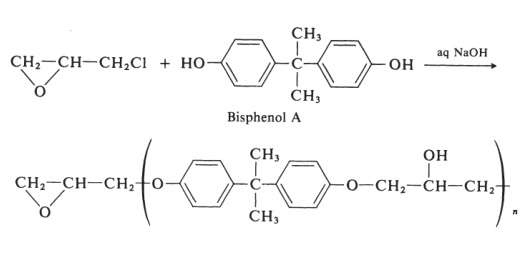| Identification | Back Directory | [Name]
Resin epoxy | [CAS]
24969-06-0 | [Synonyms]
Epoxy resin
Resins, epoxy
D.E.R.TM 330
Adhesive-Epoxy
Epoxy resin 711
Epoxy resin CYD
Epoxy resin EX-4
Epoxy resin powder
POLYEPICHLOROHYDRIN
Epoxy resin,modified
Oil-resistant sealant
EPICHLOROHYDRIN RESIN
EPOXY RESIN (NOVOLAC)
Liquid BPA epoxy resin
Functional Epoxy Resins
Acrylic epoxy resin 611
Phenolic epoxy resin F-46
Phenolic epoxy resin F-51
Poly(chloromethyloxirane)
Epoxy resin,bromated EX-20
Epichlorohydrinhomopolymer
Epoxy resin,bromated EX-48
Methacrylic epoxy resin MFE-3
Methacrylic epoxy resin MFE-2
Corrosionresistant epoxy resin
Phenolic epoxy vinyl ester resin
(chloromethyl)-oxiranhomopolymer
(Chloromethyl)oxirane,homopolymer
Oxirane,(chloromethyl)-,homopolymer
Epoxy resin E-52D for PET condenser
Epoxy resin for laying copper plate
Epoxy resin,bromated flame retarding
Water-soluble epoxy resin,solvent 681
Adhesive for agricultural machine No.2
Epoxy resin,bromated,solvent EX-48-60T
Adhesive for agricultural machine No.1
Poly(epichlorohydrin) 5g [24969-06-0]
Epoxy sealing material, flame resisting
Water-soluble epoxy resin,non-solvent 682
Polyepichlorohydrin average Mw ~700,000 by GPC
POLYEPICHLOROHYDRIN AVERAGE MW CA 700000 (GPC)
Polyepichlorohydrin, average M.W. ~700,000 (GPC)
Glass fabric based epoxy-phenolic laminated sheet
Epoxy resin for carbon fiber prewashing cloth,dry
MediuM-and-high Molecule weight Solid BPA epoxy resin | [EINECS(EC#)]
500-033-5 | [Molecular Formula]
(C11H12O3)n | [MDL Number]
MFCD00084412 | [MOL File]
24969-06-0.mol | [Molecular Weight]
92.52 |
| Chemical Properties | Back Directory | [Definition]
A thermosetting resin based on the reactivity of the epoxide group. One type is made from epichlorohydrin and bisphenol A. Aliphatic polyols such as glycerol may be used instead of the aromatic bisphenol A. Molecules of this type have glycidyl ether struc | [Appearance]
white to straw slab | [Melting point ]
115-120 °C | [density ]
1.36 g/mL at 25 °C(lit.)
| [Tg]
-22 | [Fp ]
252 °C | [form ]
slab/chunk
| [Dielectric constant]
2.5(Ambient) | [InChI]
InChI=1S/C3H5ClO/c4-1-3-2-5-3/h3H,1-2H2 | [InChIKey]
BRLQWZUYTZBJKN-UHFFFAOYSA-N | [SMILES]
C(C1OC1)Cl | [Uses]
Surface coatings, as on household appliances and gas storage vessels; adhesive for composites and for metals, glass, and ceramics; casting metalforming tools and dies; encapsulation of electrical parts; filament-wound pipe and pressure vessels; floor surf | [EPA Substance Registry System]
Oxirane, (chloromethyl)-, homopolymer (24969-06-0) |
| Hazard Information | Back Directory | [Chemical Properties]
white to straw slab | [Hazard]
Strong skin irritant in uncured state. | [Description]
Resin based on epichlorohydrin and bis phenol A. Oligomers may vary in molecular weight from 340 and higher. May produce
erythema multiforme like eruptions. The higher the molecular weight, the less sensitizing the compound. | [Preparation]
Epoxy resin is prepared by the following condensation reaction:

The condensation leaves epoxy end groups that are then reacted in a separate step with nucleophilic compounds (alcohols, acids, or amines). For use as an adhesive, the epoxy resin and the curing resin (usually an aliphatic polyamine) are packaged separately and mixed together immediately before use.
Epoxy novolac resins are produced by glycidation of the low-molecular-weight reaction products of phenol (or cresol) with formaldehyde. Highly cross-linked systems are formed that have superior performance at elevated temperatures. | [Solubility in organics]
Acetone, benzene, MEK, THF, toluene, xylene |
|
|